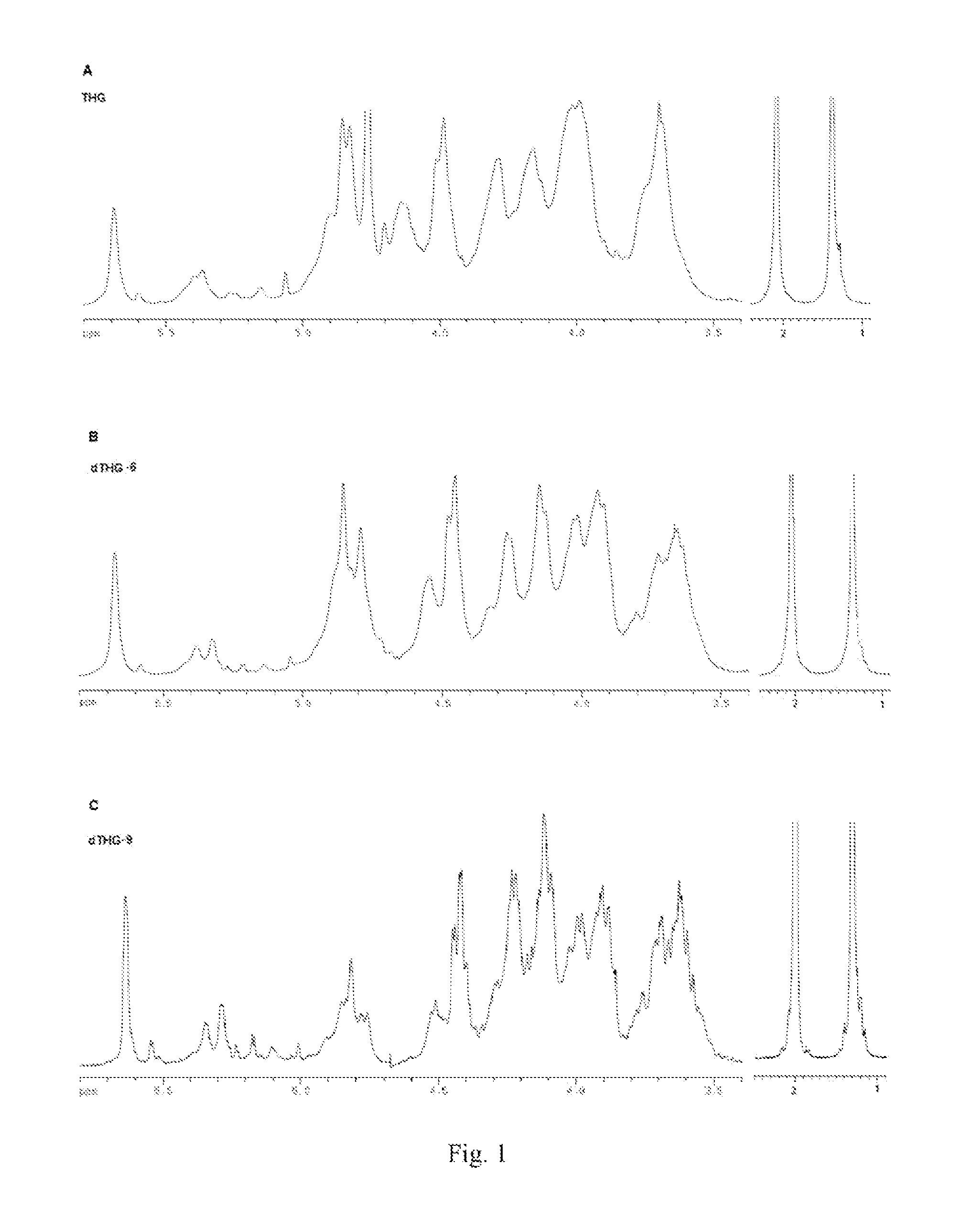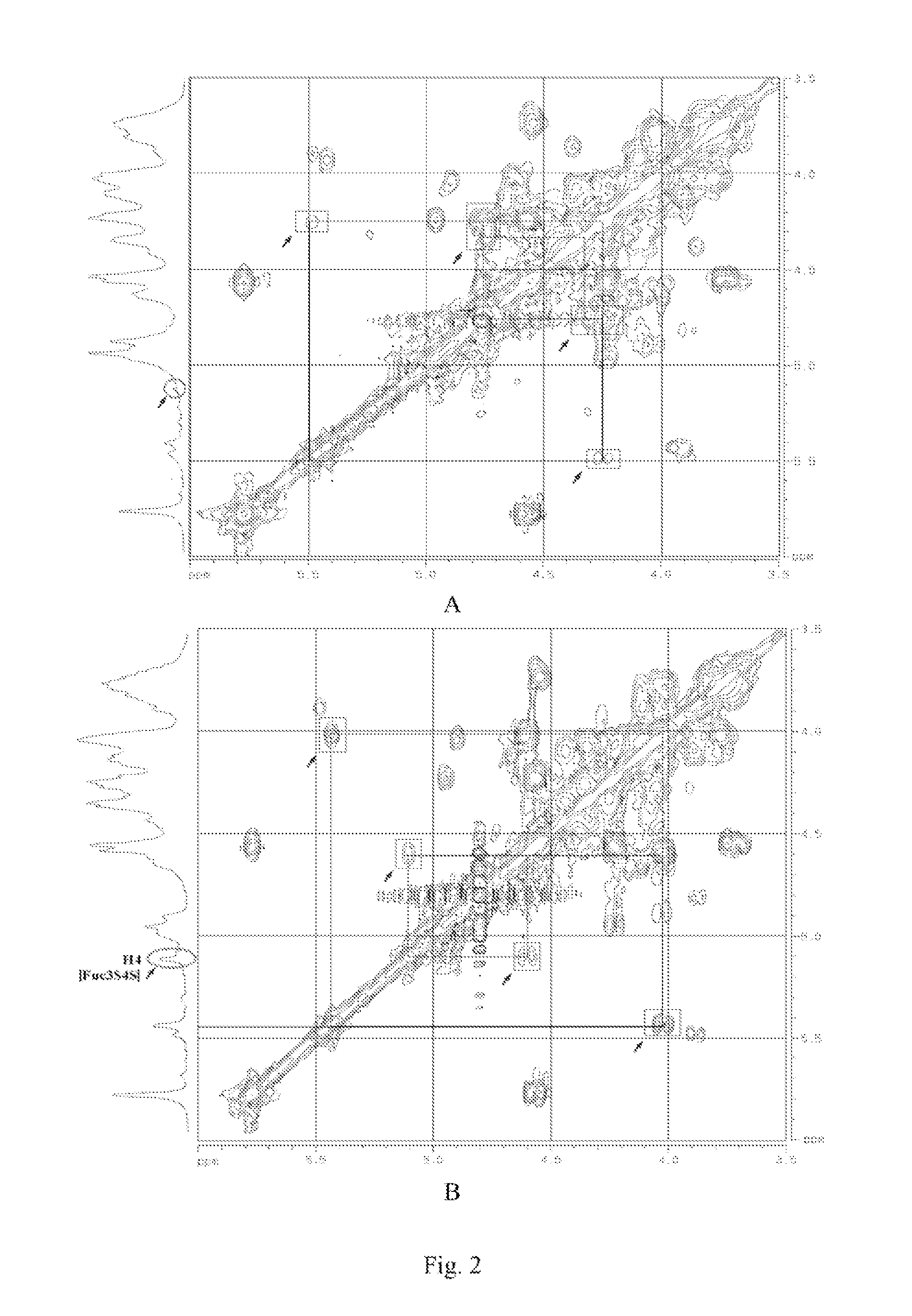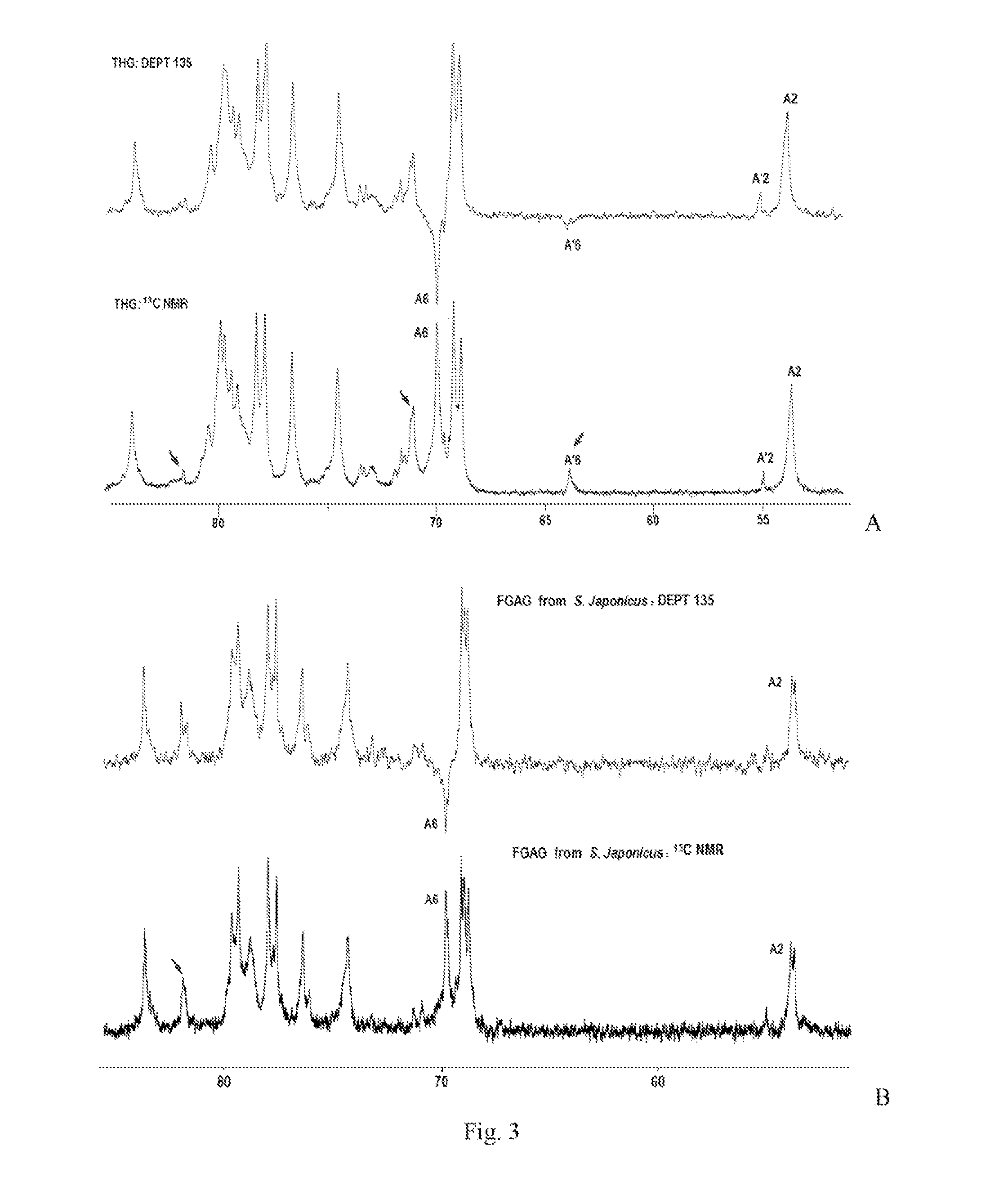Depolymerized glycosaminoglycan from Thelenota ananas and preparation method thereof
a glycosaminoglycan and thelenota anana technology, applied in the field of medical technology, can solve the problems of hemorrhagic tendency, and difficult clinical use of fgag
- Summary
- Abstract
- Description
- Claims
- Application Information
AI Technical Summary
Benefits of technology
Problems solved by technology
Method used
Image
Examples
example 1
Extraction, Depolymerization and Purification of THG
1.1 Materials
[0081]Thelenota ananas, commercially available, viscera removal and body wall dried
[0082]Stichopus japonicas, commercially available, viscera removal and body wall dried
[0083]H. leucospilota, commercially available, viscera removal and body wall dried.
[0084]Papain: 8×105 U / g, available from Guangxi Nanning Pangbo Biological Engineering Co., Ltd.
[0085]Cation exchange resin: 001×7 strongly acidic styrene type cation exchange resin, available from Nankai University Resin Co. Ltd. (Tianjin).
[0086]Reagents such as KOH, KCOCH3, H2O2, and ethanol were commercially available analytical reagents.
1.2 Extraction
[0087]20 kg dry Thelenota ananas were cut with slicer into sheets with a thickness of about 1.5 mm, placed into a laminated reaction vessel (300 L), added with 200 L water, stirred and soaked, and then added with solid NaOH under stirring until the concentration of NaOH reached 0.5M. Alkaline hydrolysis reaction was carrie...
example 2
Spectrum Analysis of THG and dTHG
[0107]Sample: THG, dTHG-6, dTHG-9, with the same sources as Example 1
[0108]Control sample: SJG, SJG-1, with the same sources as Example 1
[0109]Detection spectrum: 1H NMR; 1H-1H COSY; 1H-1H TOCSY; 1H-1H NOESY; 13C-NMR; DEPT-135°; 1H-13C HSQC; 1H-13C HMBC
[0110]Detection condition: solvent: D2O, 99.9 Atom % D (Norell company); internal standard, trimethylsilyl-propionic acid (TSP-d4); temperature, 45° C.
[0111]Instrument: AVANCE AV 400 Superconducting Nucleus Magnetic Resonance Spectrometer (400 MHz, Bruker, Switzerland)
[0112]Spectrum: see FIG. 1˜FIG. 4.
[0113]Result Analysis:
[0114](1) Comparison of the Spectroscopies of THG and dTHG:
[0115]FIG. 1 shows 1H NMR spectroscopies of THG, dTHG-6, dTHG-9, wherein the water peaks in the spectra of dTHG-6 and dTHG-9 were suppressed. It can be seen from FIG. 1 that THG, dTHG-6 and dTHG-9 had substantially identical signal features, only when the molecular weight was lower, the signal was more distinct. It is seen th...
example 3
Detection of Biological Activities of THG / dTHG
3.1 Detection of Platelet Inducing Activity
[0125]Sample: dTHG-1˜dTHG-10, with the same source as example 1
[0126]Control sample: dSJG-1˜dSJG-4, with the same source as example 1
[0127]Method: New Zealand white rabbit was taken blood from abdominal aorta. The blood was antifreezed with 3.8% sodium citrate (1:9) and centrifugated at 200×g for 8 min to get platelet-rich plasma (PRP), and centrifugated at 1500×g for 10 min to get platelet-poor plasma. Platelet count of PRP is about 4.0×105 / mm3. Bron method (Born G V R. Nature, 1962, 194:927): The effect of the samples on platelet aggregation was detected with platelet aggregometer. In the experiment, physiological saline was used as blank control, and the final concentration of the sample was 200 μg / ml. The experiment was repeated for 3 times and the mean values of maximum degree of platelet aggregation were calculated.
[0128]Results: see Table 4.
[0129]
TABLE 4Comparison of platelet aggregation-...
PUM
| Property | Measurement | Unit |
|---|---|---|
| weight average molecular weight | aaaaa | aaaaa |
| weight average molecular weight | aaaaa | aaaaa |
| weight-average molecular weight | aaaaa | aaaaa |
Abstract
Description
Claims
Application Information
 Login to View More
Login to View More - R&D
- Intellectual Property
- Life Sciences
- Materials
- Tech Scout
- Unparalleled Data Quality
- Higher Quality Content
- 60% Fewer Hallucinations
Browse by: Latest US Patents, China's latest patents, Technical Efficacy Thesaurus, Application Domain, Technology Topic, Popular Technical Reports.
© 2025 PatSnap. All rights reserved.Legal|Privacy policy|Modern Slavery Act Transparency Statement|Sitemap|About US| Contact US: help@patsnap.com



